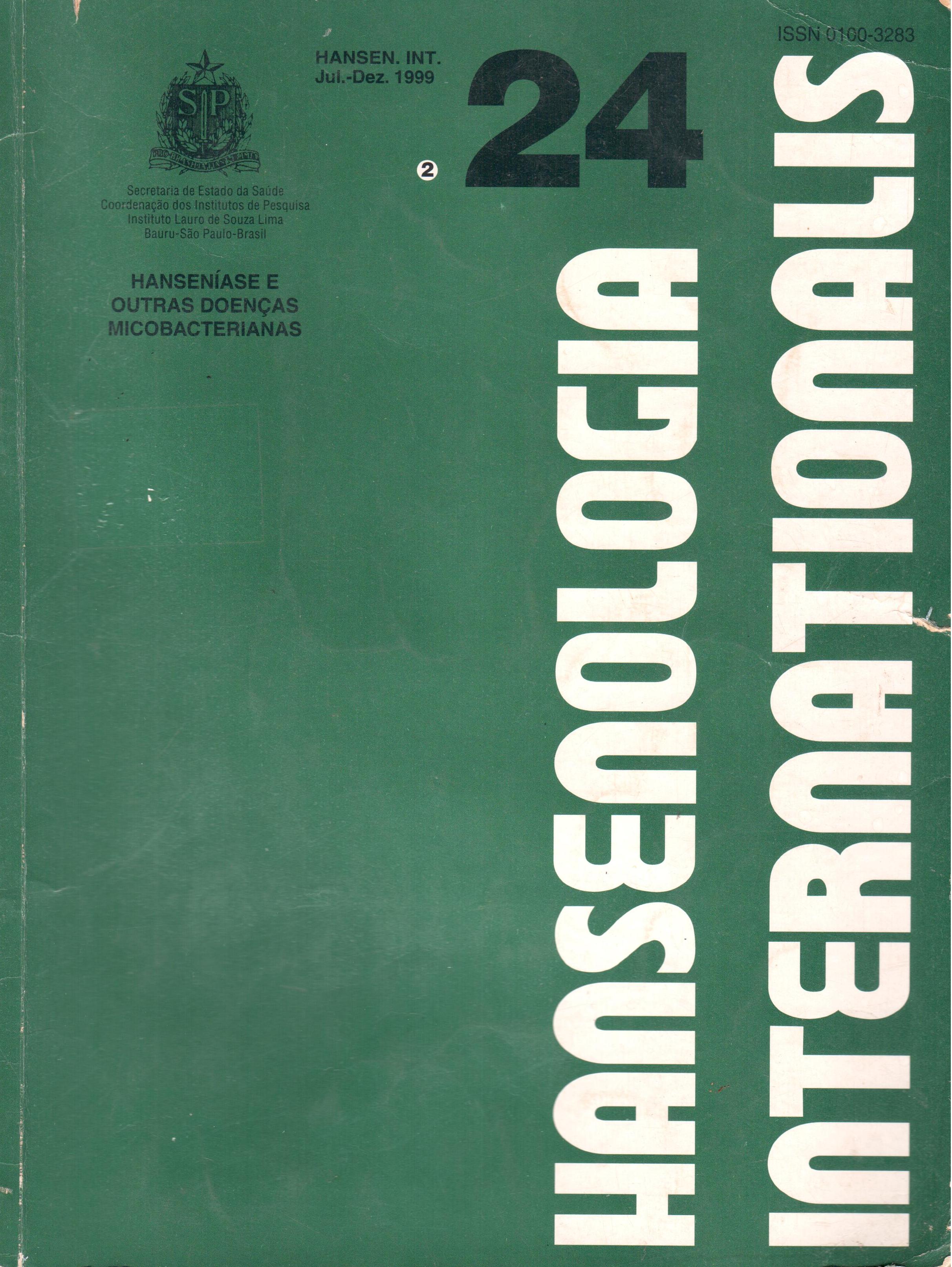Abstract
Considering the upper airways the most likely infective route for the M. leprae, the present study evaluated the behavior of the bacilli experimentally inoculated via intranasal. Thus, Swiss mice were inoculatedwith M. leprae by nasal instillation and then sacrificed in different periods of time. Lungs were removed and submitted to bronchoalveolar lavage (BAL) and histopathological exam in each sacrifice. The number of
bacilli recovered and the total and differential number of inflammatory cells were evaluated in the BAL. The BAL was also cultured in Lowenstein-Jensen and Middlebrook 7H9 and 7H11 media. Bacilli were found in the BAL until the 6th month after inoculation. Cultures for mycobacteria were all negative. The total number of cells, lymphocytes and neutrophyls in the BAL of infected mice was higher than in the control group until the 6th month of experimentation. The histopathological analy-sis showed small cellular infiltrates distributed throughout the pulmonary parenchyma and around vessels, up to the 6th month of sacrifice. Lesions of dissemination were. not found. The results obtained revealed that inoculation of M. leprae via intranasal in Swiss mice did not result in development of disease and neither in multiplication of the bacilli. Therefore, additional studies involving other strains of mice would be useful to determine the importance of the intranasal via in leprosy infection.
References
2. BILYK,N. et al. Funtional studies on macrophage populations in the airways and the lung wall of sPF mice in the steadystate and during respiratory virus infection. Immunology, v.65, pA17-425, 1988.
3. BRAND, P.w. Temperature variation and leprosy deformity. Int. }. Leprosy, v.27, p.1-7, 1959.
4. CHEHL, S. et al. Transmission of leprosy in nude mice. Amer. }. Trop. Med. Hyg. , v.34, p. 1161-1166, 1985.
5. DAVEY, T.F., REEs, R.J.W. T he nasal discharge in leprosy: clinical and bacteriological aspects. Leprosy Rev. , vA5, p.121-134, 1974.
6. FARACO, J. Bacilos de Hansen e cortes de parafina: Metodo complementar para pesquisa de bacilos de Hansen em cortes de material incluido em parafina. Rev. bras. Leprol., v.6, p.177-180, 1938.
7. FIT E, G.L. Staining of acid-fast bacilli in parafin sections. Am. }. Pathol. , v.14, pA91-507, 1938.
8. FREUDENBERG, N. et al. Function and "homing"of the lung macrophages. I. Evidence of functional heterogeneity of mobile cells of the murine lung parenchyma in the bronchoalveolar lavage (BAL). Virchows Arch. B Cell Pathol. v,64, p.191-197, 1993.
9. HALEY, P.J. et a/. Comparative morphology and morphometry of alveolar macrophages from six species. Am. }. Anat. , v.191, pAOl-407, 1991.
10. HASTINGS, R. C Leprosy. 2. ed. Edinburgh: Churchill Livingstone, 1994. 470p.
11. HUBsCHER, S. et al. Discharge of Myco-bacterium leprae from the mouth in lepromatous leprosy patients. Leprosy Rev. , v.50, pA5-50, 1979.
12. KIMPEN, J.L.L., OGRA, P.L. T cell redistribution kinetics after secondary infection of BALB/c mice with respiratory syncytial virus. Clin. Exp. Immunol., v.91, p.78-82, 1993.
13. LEVITZ, S.M., DIBENEDET TO, D.J. Paradoxical role of capsule in murine bronchoalveolar macrophage-mediated killing of Cryptococcus neoformans. }. Immunol. , v.142, p.659-65, 1989.
14. McDERMOTT-LANCASTER, R.D., McDOU-GALL, A.C Mode of transmission and histology of M. leprae infection in nude mice. Int. }. Exp. Path. , v.71, p.689-700, 1990.
15. OPENSHAW, P.J.M. Flow cytometric analysis of pulmonary lymphocytes from mice infected with respiratory syncytial virus. Clin. Exp. Immunol. , v.75, p.324-8, 1989.
16. PALLEN, M.J., McDERMOT T, R.D. How might Mycobacterium leprae enter the body? Leprosy Rev. , v.57, p.289-297,1986.
17. REEs, R.J.W., McDOUGALL, A.C Airbone infection with Micobacterium leprae in mice. Int. }. Leprosy, vA4, p.63-68, 1976 .
18. RIDLEY, D.s., HILSON, G.R.F. A logarithimic index of bacilli in biopsies. I. Method. Int. }. Leprosy, v.35, p.184-186, 1967.
19. SAWY ER, R.T. Experimental pulmonary candi-diasis. Mycopathologia, v.l 09, p. 99-109, 1990.
20. SHEPARD, CC T he experimental disease that follows the infection of human leprosy bacilli into foot pads of mice.}. Exp. Med. , v.112, pA45-454,1960.
21. SUGAR, A.M., PICARD, M. Macrophage and oxidantmediated inhibition of the ablity of live Blastomyces dermatitidis conidia to transform to the pathogenic yeast phase; implications for the pathogenesis of dimorphic fungal infections. J. Infect. Dis. , v.163, p.371-5, 1991.
22. TAKIZAWA, H. et al. Experimental hyper-sensitivity pneumonitis in the mouse: histologic and immunologic features and their modulation with cycloporin A. }. Allergy Clin. Immunol. , v.81, p.391-400, 1988.
23. VAUX-PERETZ, F., MEIGNIER, B. Comparison of lung histopathology and bronchoalveolar lavage cytology in mice and cotton rats infected with respiratory syncytial vitus. Vaccine, v.8, p.543-8-1990.
24. VAUX-PERETZ, F. et a/. Comparison of the ability of formalininactivated respiratory syncytial virus, immunopurified F, G and N proteins and cell lysate to enhance pulmonary changes in BALB/c mice. Vaccine, v.l 0, p.113-118, 1992.
25. VILANI-MORENO, F.R. et al. Study of pulmonary experimental paracoccidioidomycosis by analysis of bronchoalveolar lavage cells: resistant vs. susceptible mice. Mycopathologia, v.141, p.79-91, 1998.
26. WHO - World Health Organization- Laboratory Techniques for Leprosy (WHO/Css/LEP/86A), 1987, p.l07-118.

This work is licensed under a Creative Commons Attribution 4.0 International License.
